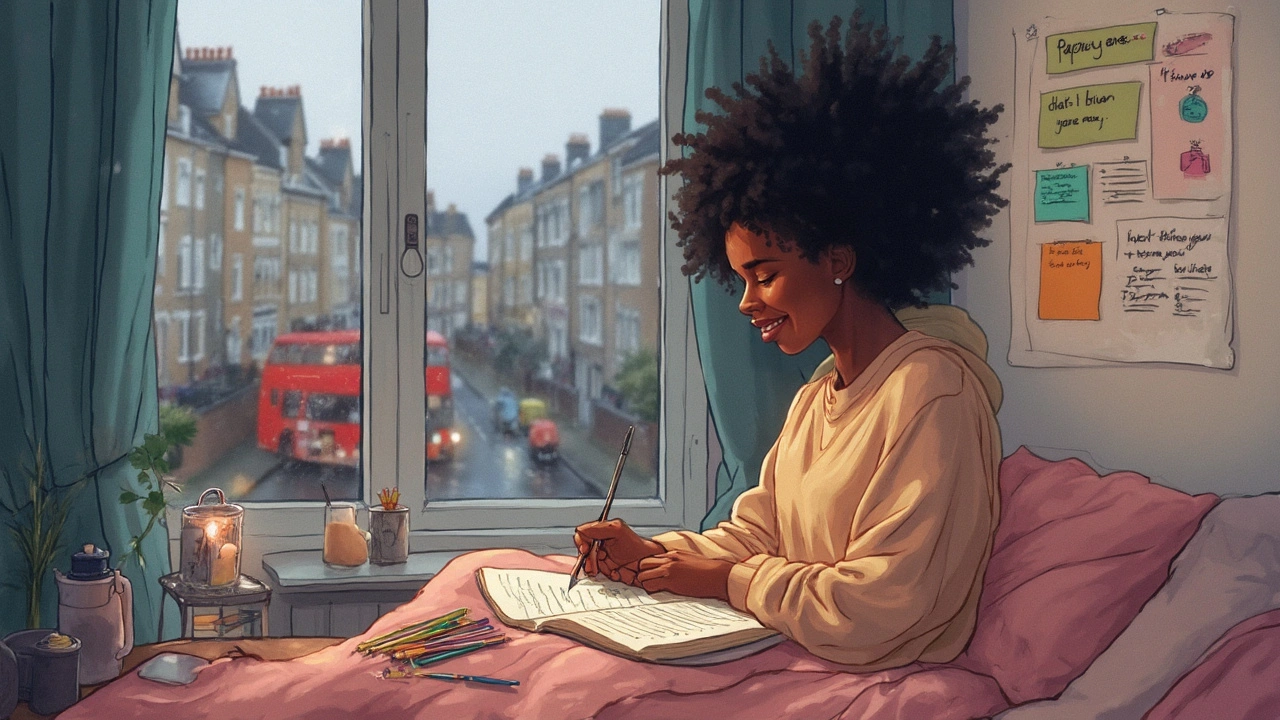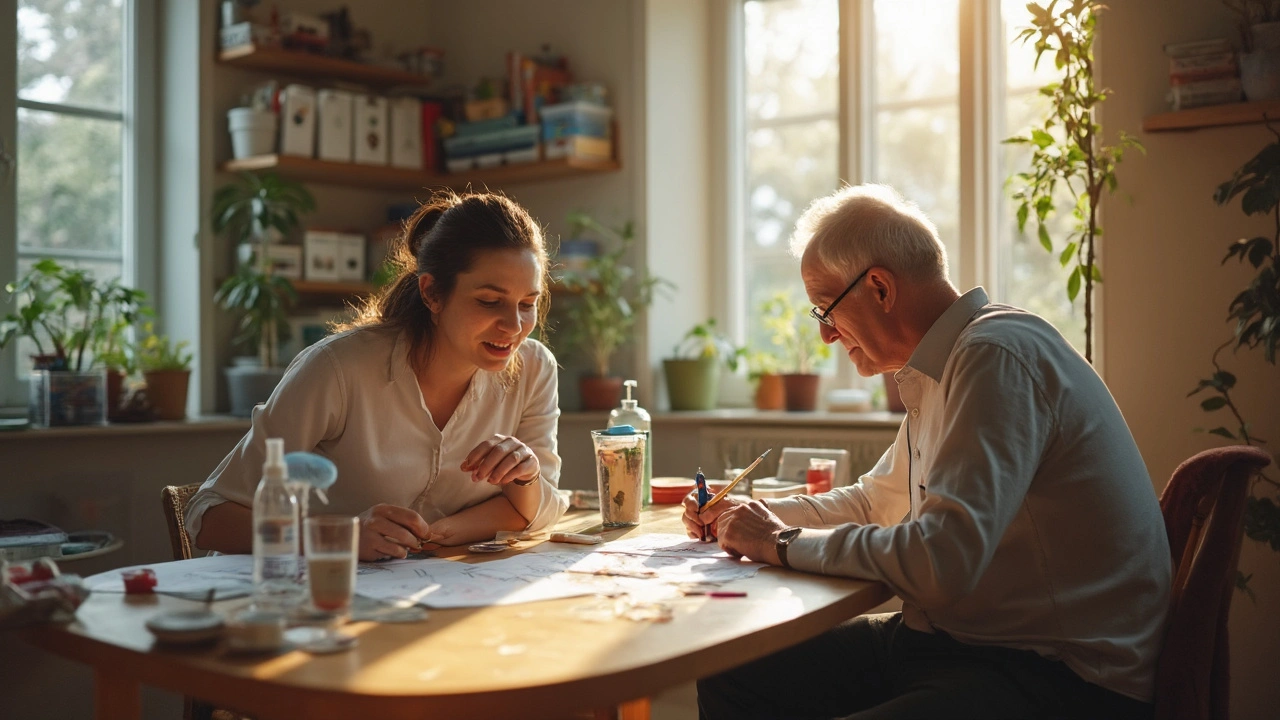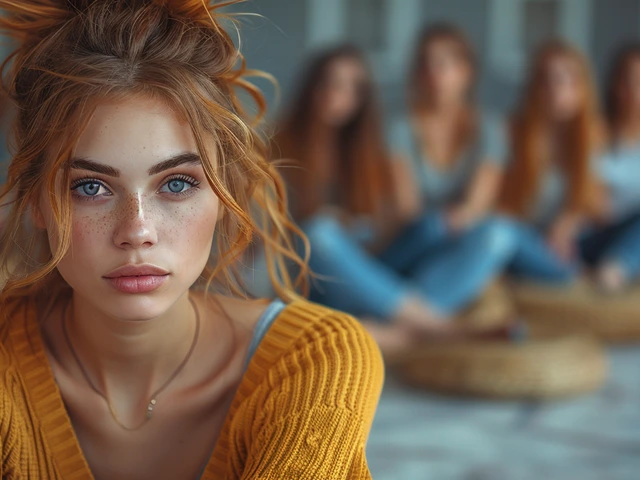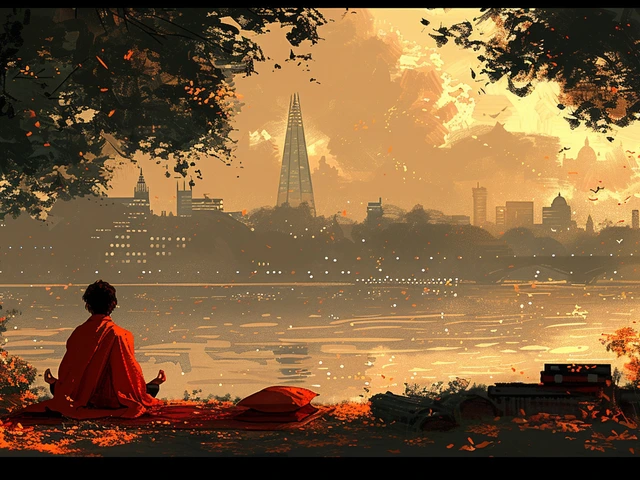If talk-only strategies haven’t shifted your stress, low mood, or burnout, there’s another doorway: make something. Paint, move, drum, write, act it out. That’s the promise here-use creative process to regulate your nervous system, process tough stuff, and feel more alive. It’s not magic. It’s practical, structured, and surprisingly doable, even if you “can’t draw a stick figure.” I’m a dad in windy Wellington, and I’ve seen my son Jasper calm through drum patterns and my daughter Dora work through school jitters with collage. This guide turns that experience and the best research I know into steps you can actually use.
- Creative arts therapies reduce symptoms of depression, anxiety, and stress; help with trauma processing; and boost quality of life, according to WHO’s 2019 scoping review and multiple Cochrane analyses.
- Pick a modality that fits your body and interests: art, music, dance/movement, drama/role-play, or therapeutic writing. Consistency beats talent.
- Start with 2-3 short sessions per week for 30 days. Track mood (0-10), sleep, and tension. Escalate to a registered therapist if symptoms are severe or stuck.
- Safety first: avoid graphic trauma content when alone; focus on regulation skills (breath, rhythm, grounding) before deep processing.
- Finding a pro? In NZ, look for AThR (Registered Arts Therapist) via ANZACATA. Expect NZ$120-$200 per individual session; group options are cheaper.
What Creative Arts Therapies Are-and Why They Work
When you hear “therapy,” you might picture a couch and lots of talking. Creative arts therapies are different. They use art-making, music, movement, drama, or writing-guided by a trained therapist-to spark change. Under the umbrella you’ll find art therapy, music therapy, dance/movement therapy (DMT), drama therapy/psychodrama, and expressive writing/poetry therapy. One isn’t “better.” They simply give your brain and body more ways to process experience.
What’s going on under the hood? A few simple mechanisms explain a lot:
- Regulation: Rhythm, breath, and repetitive mark-making calm the nervous system. You feel steadier and less reactive.
- Access: Some memories, beliefs, and emotions are hard to put into words. Images and movement access them without forcing language.
- Exposure with control: You can approach tough material a little at a time (e.g., draw a storm as a symbol) and step back when needed.
- Meaning-making: Externalizing inner experience (a canvas, a scene, a beat) makes it easier to reframe and integrate.
- Connection: Group music or movement builds belonging and social support, which protects mental health.
What does the evidence say? The World Health Organization’s 2019 scoping review of over 900 publications found broad positive effects of arts on health and well-being across prevention and treatment. Cochrane reviews report small-to-moderate improvements in depression with music therapy (Aalbers et al., 2017) and promising effects of dance/movement therapy for depression (Meekums et al., 2015). Music interventions reduce anxiety in medical settings (Bradt & Dileo, 2014), and expressive writing shows small-to-moderate benefits for stress and health markers (meta-analyses by Smyth, 1998; Frattaroli, 2006). That’s a lot of signal for something most of us can start at home with paper, pens, and a timer.
Set your expectations right. These methods complement-not replace-evidence-based talk therapies and medication. Think of them as a second channel. With steady practice, you should notice shifts in sleep, tension, and mood within 2-6 weeks. If you’re dealing with active trauma symptoms, major depression, bipolar disorder, or psychosis, partner with a qualified therapist from the start.
| Modality | Best For | Evidence Snapshot | Typical Session | Time to Notice Change | NZ Cost (indicative) |
|---|---|---|---|---|---|
| Art Therapy | Anxiety, trauma processing, kids/teens, perfectionism | WHO 2019 review supports mood/stress benefits; multiple RCTs show anxiety reduction | 45-60 min; guided prompts; reflection | 3-6 weeks | NZ$120-$200 individual; NZ$30-$60 group |
| Music Therapy | Depression, stress, medical settings, neuro rehab | Cochrane 2017: small-moderate depression reduction; strong anxiety reduction in hospitals | 45-60 min; active music-making or receptive listening; discussion | 2-6 weeks | NZ$120-$200 individual; NZ$25-$50 group |
| Dance/Movement Therapy (DMT) | Body-based anxiety, trauma, alexithymia, burnout | Cochrane 2015: promising for depression; improved body image and affect regulation | 60 min; breath, rhythm, guided movement; grounding | 2-6 weeks | NZ$120-$200 individual; NZ$20-$40 group |
| Drama Therapy / Psychodrama | Social anxiety, role conflicts, grief, family dynamics | Growing RCTs; consistent gains in social functioning and emotion regulation | 60-90 min; role-play, scene work, de-roling | 4-8 weeks | NZ$140-$220 individual; NZ$30-$70 group |
| Expressive Writing | Stress, rumination, grief, medical stress | Meta-analyses (Smyth 1998; Frattaroli 2006): small-moderate benefits | 15-20 min writing on 3-4 days; optional sharing | 2-4 weeks | Free (journals), or workshop fees vary |
If you want one phrase to remember: consistency over complexity. Even ten minutes of steady practice can shift your day.
A 30‑Day Plan: Start Safely, Then Go Deeper
Here’s a simple, repeatable plan. It’s flexible-adapt to your energy, symptoms, and preferences.
- Set a specific goal
Pick one outcome you care about. Examples: “Lower my evening anxiety from 7/10 to 4/10,” “Sleep through the night twice a week,” “Process grief around a breakup without melting down.” - Choose your modality
Use this quick rule of thumb:- If your body is tight and jittery → try dance/movement or drumming.
- If your mind spins with thoughts → try art therapy (image-making beats overthinking).
- If you feel flat and unmotivated → try upbeat music-making or drama role-play.
- If you need privacy or portability → try expressive writing.
- Set your minimum viable session
Pick a tiny, repeatable container so you’ll actually do it: 10-20 minutes, 3 times a week, for four weeks. Put it in your calendar. Pair it with a consistent time (e.g., after lunch or before bed). - Prepare your space
Clear a 1-2 metre area. Lay down paper or a yoga mat. Put on comfortable clothes. Reduce distractions. No perfection; just enough to feel safe. - Session flow template
- Arrive (2 minutes): Breathe low and slow. Notice feet, chair, or floor.
- Creative prompt (10-15 minutes): See the exercises below by modality.
- Close (3 minutes): Title your piece, circle one word you feel now, or rate mood 0-10. Clean up and reset the space.
- Track outcomes
On a single sticky note or phone note, track daily: mood (0-10), tension (0-10), sleep quality (poor/okay/good), and whether you completed your session. Weekly, write one line: “What helped? What got in the way?” - Escalate wisely
Partner with a registered therapist if: symptoms are severe (suicidal thoughts, panic attacks, self-harm), you have trauma history and get flooded, or you stall after two weeks despite consistent practice. - Find a therapist (NZ and beyond)
In New Zealand, look for an AThR (Registered Arts Therapist) through ANZACATA. Ask about training, experience with your concern (e.g., trauma, ASD, chronic pain), how they measure progress, and fees. Many offer sliding scales or groups. Telehealth can work well for art and writing therapies; some music therapists also run remote sessions.
Safety notes I insist on with my own family:
- If you feel overwhelmed, switch to regulation tools: slower breath, longer exhales, bilateral tapping, gentle swaying. Save heavy content for a session with a pro.
- No alcohol or recreational drugs before sessions. They scramble memory processing and emotional learning.
- If sleep gets worse or you feel more irritable for more than a week, reduce intensity and content depth. Focus on soothing prompts, not trauma themes.

Exercises, Checklists, and a Quick Decision Tree
These are simple, structured starters. Adjust tempo and intensity to match your energy.
Art Therapy
- Color Breathing: Pick two colours-calm and worry. For 10 minutes, breathe in “calm,” exhale “worry,” and paint or scribble the colours on separate halves of a page. Title it, then write one sentence: “When I look at this, I notice…”
- Safe Symbol: Draw a simple shape that means safety (a rock, a tree, a lighthouse). Add lines and colours that make it sturdier. Keep it somewhere you can see it.
- Three-Panel Story: Panel 1: Before (current struggle). Panel 2: Turning point. Panel 3: After (desired state). Keep it abstract if needed.
Materials checklist for art:
- A3 paper or sketchbook, basic coloured pencils or markers, child-safe materials if kids join, masking tape, a bin within reach.
Music Therapy (self-guided)
- 5-7-9 Rhythm Reset: Tap thighs in a 5-7-9 pattern (count it out loud). Do 3 rounds, then breathe. This interrupts spirals.
- Emotion Playlist: Create three 15-minute playlists-soothe, match, lift. Start with “match” your mood, then pivot to “soothe,” finish with “lift.”
- Call-and-Response Drumming: Use a table or hand drum. Make a 4-beat call, answer with a different 4-beat. Alternate for 10 minutes.
Gear checklist for music:
- Hand drum or tabletop, metronome app, headphones. Optional: small keyboard or ukulele.
Dance/Movement Therapy
- Box Breathing + Sway: Inhale 4, hold 4, exhale 4, hold 4, while gently swaying. Add arm arcs. Aim for 6 minutes.
- Shape-Shift: Choose two body shapes-“tension” and “ease.” Move between them slowly, exploring five steps in between. Name each step.
- Boundary Walk: Walk a square in your room. At each corner, say “no,” “yes,” “maybe,” “later.” Notice what your body does.
Space checklist for movement:
- 2 metres of clear floor, stable shoes or bare feet, water, a soft timer.
Drama Therapy
- Two Chairs: Put “Worry” in one chair and “Wise You” in the other. Alternate speaking for 5 minutes. Finish by de-roling: “I am me. Worry is there.”
- Future Rehearsal: Act a tricky upcoming conversation. Try three versions: assertive, curious, boundaried. Pick one line to keep.
- Prop Partner: Use a scarf or mug as a “character.” Let it ask you a hard question. Answer briefly and switch roles.
Expressive Writing
- 4×4 Write: Write about a stressful event for 15 minutes on four days this week. Include thoughts, feelings, and what it means to you. Seal it away; no need to reread yet.
- Letter You Don’t Send: Write to someone (or yourself) about a boundary, a regret, or gratitude. Tear it up or keep it private.
- Body Scan Log: Note three body sensations each evening and a sentence linking them to your day.
Decision tree (super simple):
- Do you feel your stress mostly in your body? → Start with movement or drumming.
- Do you get stuck in thoughts? → Start with image-making or collage.
- Do you feel flat and disconnected? → Start with upbeat music or drama exercises.
- Do you need something you can do quietly anywhere? → Start with writing.
Pitfalls to avoid:
- Going too deep, too fast: keep early sessions on regulation and resourcing, not trauma scenes.
- Chasing perfect: messy is good. The goal is change in you, not a gallery piece.
- Doing it only when you feel bad: schedule it like brushing your teeth so you build capacity before crises.
Pro tips:
- Name it to tame it: give your piece a title-even one word-and notice how that shifts your state.
- Use time boxing: stop on the buzzer, even if you want to keep going. This teaches your nervous system that you’re in charge.
- Share selectively: if you choose to share, pick someone who listens without fixing. Clear the boundary: “I just want you to witness.”
FAQ and Next Steps
Is this as effective as CBT?
Head-to-head trials are limited. For depression and anxiety, effect sizes are often small to moderate-similar to many psychosocial interventions. The best results come when arts therapies are combined with solid care: CBT, ACT, meds, sleep, movement, and social connection.
What if I’m “not creative”?
Good. No habits to unlearn. The point is process, not product. In research, benefits don’t depend on skill; they depend on engagement and fit.
How many sessions do I need?
In studies, 6-12 sessions is a common arc. Many people feel early wins within 2-4 weeks. For trauma work, plan for a longer runway with a trained therapist.
Is it safe for trauma?
Yes-with pacing and containment. Start with resources (breath, rhythm, safe symbols). Avoid detailed trauma content without a therapist. If you dissociate, keep stimuli simple (slow breath + one colour wash), and anchor with sound or touch (hold an ice cube, feel your feet).
Can kids and teens use this?
They’re naturals. Keep materials safe and prompts playful. With teens, give choices and control; don’t force sharing. In NZ schools, some counsellors partner with arts therapists-ask what’s available.
Does telehealth work?
Art and writing translate well to telehealth. Music can, too, with basic gear. Movement works with a clear space and camera angle. Agree on safety signals with your therapist.
How do I measure progress?
Use a tiny dashboard: weekly mood average, sleep quality, and an energy or tension rating. Add one functional metric you care about (e.g., “number of panic-free commutes,” “bedtime before 11 pm”).
Will insurance or public funding cover it?
Coverage varies. In New Zealand, some providers are funded in community and hospital settings. ACC may fund care when it’s part of an accepted claim and delivered by registered providers. Ask your therapist about pathways. Community groups and libraries often run low-cost workshops.
What does the credential mean?
In NZ and Australia, look for AThR (Registered Arts Therapist) through ANZACATA. It signals graduate training, supervised practice, and a code of ethics. For music therapists, look for RMT (Registered Music Therapist) via the local professional body.
Next steps, tailored to common situations:
- Burned-out parent: Pick 10-minute Colour Breathing after the kids’ bedtime, 3x/week. Pair with the Soothe playlist. After two weeks, try Two Chairs for one sticky pattern (“evening chaos”).
- Uni student with social anxiety: Start with Future Rehearsal once a week. Add a 15-minute collage about “strengths I forget I have.” Join a campus arts group for gentle exposure.
- Desk-bound professional: Schedule Movement Shape-Shift at 3 pm on workdays. Then 5-7-9 Rhythm Reset before logging off. Track energy 0-10.
- Chronic pain: Use slow breath + drawing safe symbols; avoid clenching. Try receptive music at 60-80 BPM. Note any shifts in pain interference, not just pain intensity.
- Grief: Alternate expressive writing 4×4 with gentle art prompts; avoid memorial deep dives at night. Add a weekly walk with music that matches-then-lifts.
How to stick with it when life gets messy:
- Lower the bar: if 20 minutes is too much, do 4 minutes. Keep the streak alive.
- Bundle it: tie your session to something you already do (make tea, then 10-minute collage).
- Make it visible: leave a sketchbook and pens on the table; instrument on a stand.
- Use a simple cue: a weekly calendar reminder named “Regulate, then create.”
If you’ve read this far, you already know the move: pick one tiny action and try it today. Put on a song that meets you where you are, grab a pen, and make a mark. That’s you choosing to feel better with creative arts therapies-one honest session at a time.
References (selected): World Health Organization, 2019, “What is the evidence on the role of the arts in improving health and well-being? A scoping review.” Cochrane Reviews: Aalbers S. et al., 2017, Music therapy for depression; Meekums B. et al., 2015, Dance movement therapy for depression; Bradt J. & Dileo C., 2014, Music interventions for anxiety. Expressive writing meta-analyses: Smyth J., 1998; Frattaroli J., 2006. Professional standards: ANZACATA (AThR credential).





